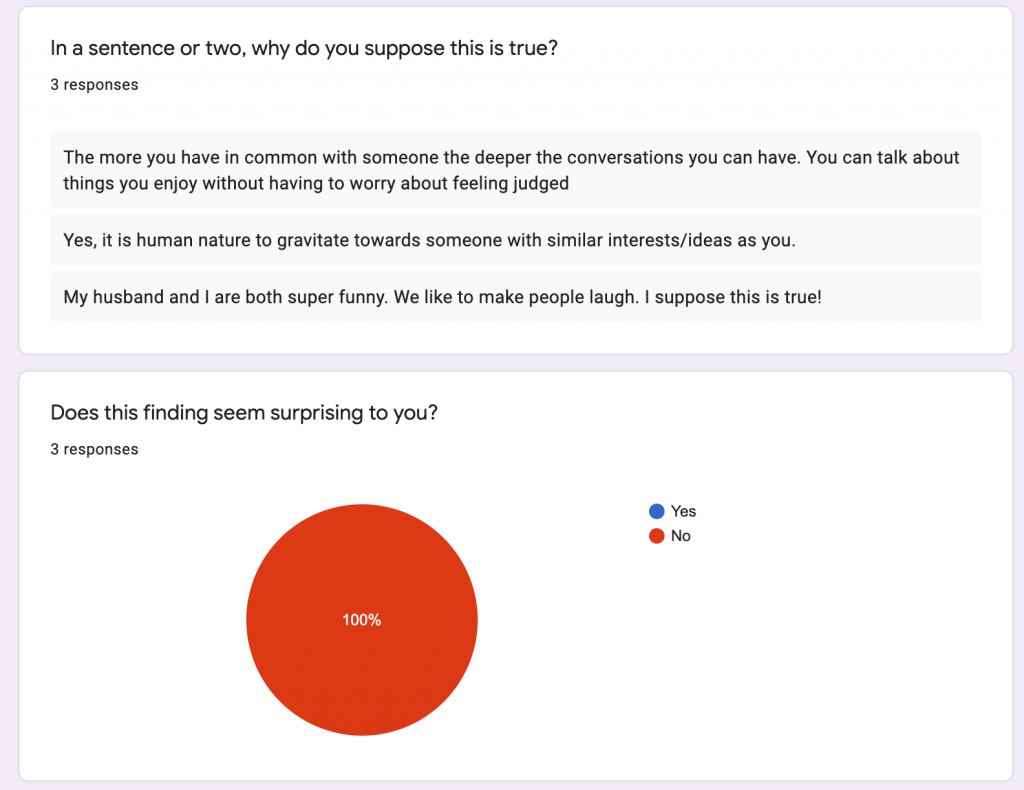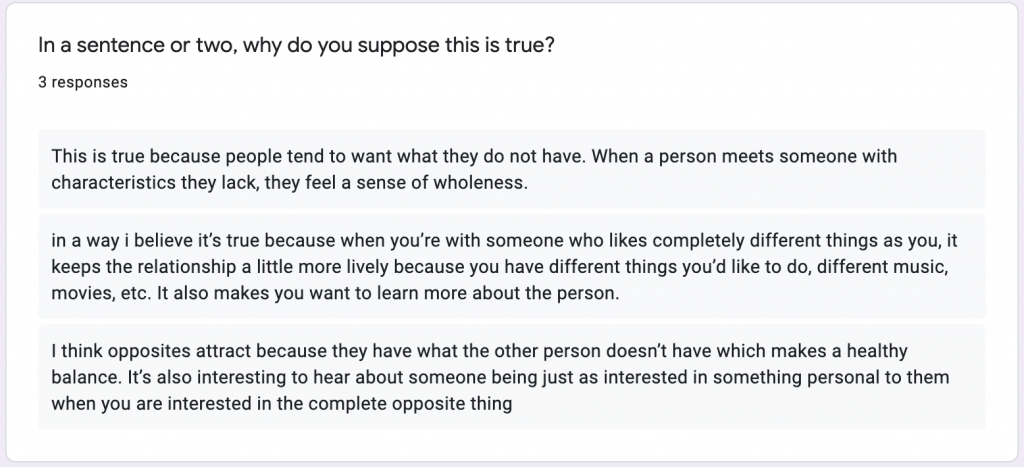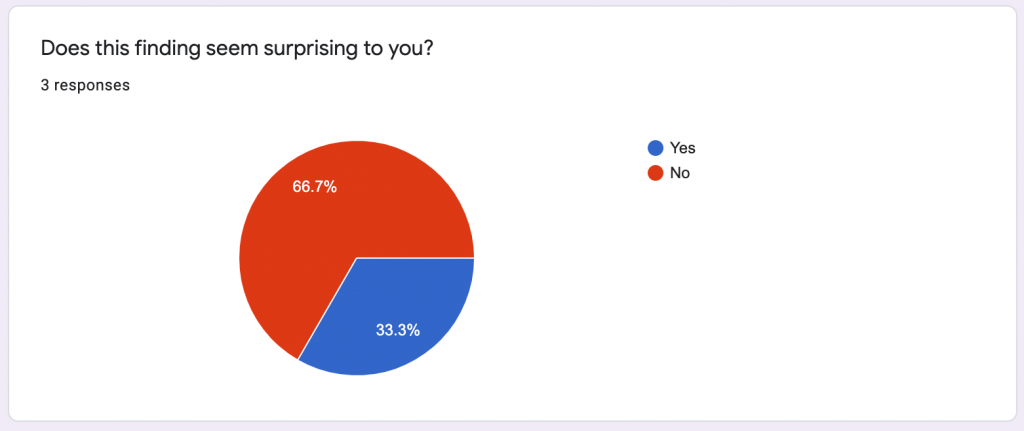Artifact 3
For my third top artifact of the semester, I chose to use the item to archive from module 11. In this assignment, we had to think of ten different people in our lives and then list whether they were happy or unhappy and whether they were selfish or unselfish. My results, like I’m sure many others did, showed that happy people are very likely to be unselfish and that unhappy people are very likely to be selfish. Although this was not surprising to me, I enjoyed using examples from my own head to better see the context of how people who help others are often happier versions of themselves.
The number one thing I took away from doing this item to archive is that being a more selfless human being is in turn, being selfish because it allows you to become a happier version of yourself. Helping others is an important aspect of living a positive life and I always enjoy doing assignments that help me become a better person, rather than just a smarter person. I would say it helped expand my knowledge of chapter 9’s teaching of prosocial behavior and helping others because it showed me that those who help others tend to be much happier people. My representative visual image is a screenshot of my table from module 11’s item to archive. This relates to what I wrote because it shows how much a person’s selfishness level relates to their happiness level.
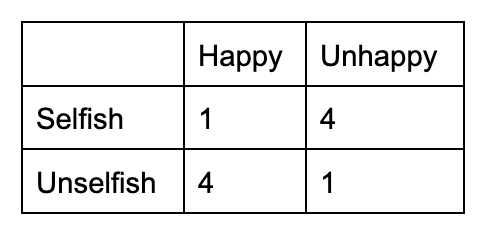
Artifact 2
I chose to include this item to archive because this was my favorite one to complete. It made me feel good about myself because I focused on some of my positive traits and we often don’t do that when examining ourselves as a whole. This item to archive felt a bit more personal than the others and that is another reason I liked it. Instead of watching a video or reading an article and interpreting different aspects of it, we were able to write about actual things that happen in our day-to-day lives.
This assignment helped to teach me more about self-knowledge. I was able to better understand aspects of myself that I had never really thought about before by using introspection, which is the examination of one’s own personal and emotional self. By using introspection, I was able to pick out some of my favorite traits about myself and write about real-life examples. This assignment helped me broaden my knowledge on how we, as humans, view ourselves, and how the view of ourselves changes with each individual.
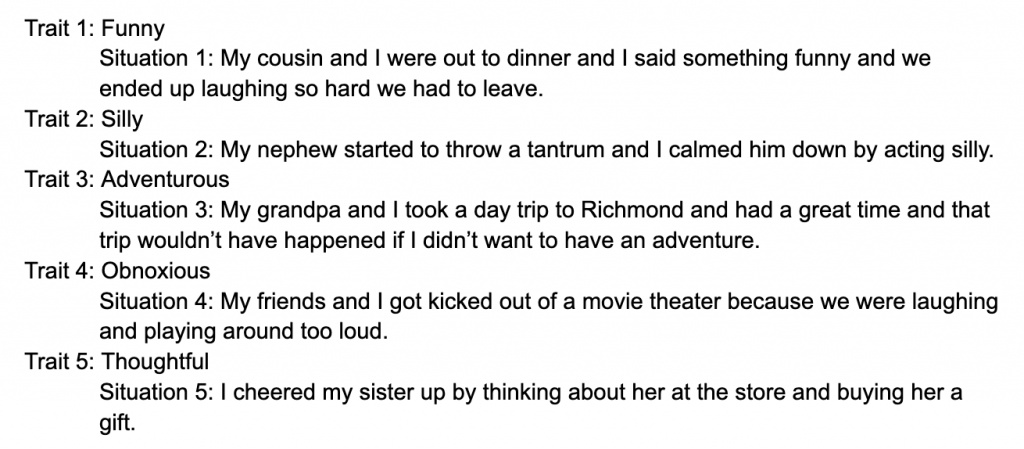
Artifact 1
Out of the items to archive that I completed between modules 3 and 6, my favorite was the item to archive number 1. This is where we had to ask people why they think similar people/opposites attract and record their reactions. I liked this item to archive the most because it allowed me to gather outside opinions, rather than just my own. I liked the idea of having different results to compare and contrast. I learned that often, people will agree with what you tell them. Even though the two forms I made were completely different, most of the participants that I assigned to each form agreed with what the form said (either similar people attract or opposites attract). I found that to be interesting.
It expanded my knowledge of the concepts we were learning because it provided a real-life example that I created and that people that I knew provided feedback on. Having the personal connection of creating the surveys and people I knew filling them out rather than the participants in a random study doing so made the concepts that we were learning that much more real. I was able to gather my own data and with that data, I was better able to grasp the knowledge I needed to successfully complete module 3. My representative visual image is relevant because it is a picture of the results that I gathered for both the form that states similar people will find each other and the form that states opposites attract.
